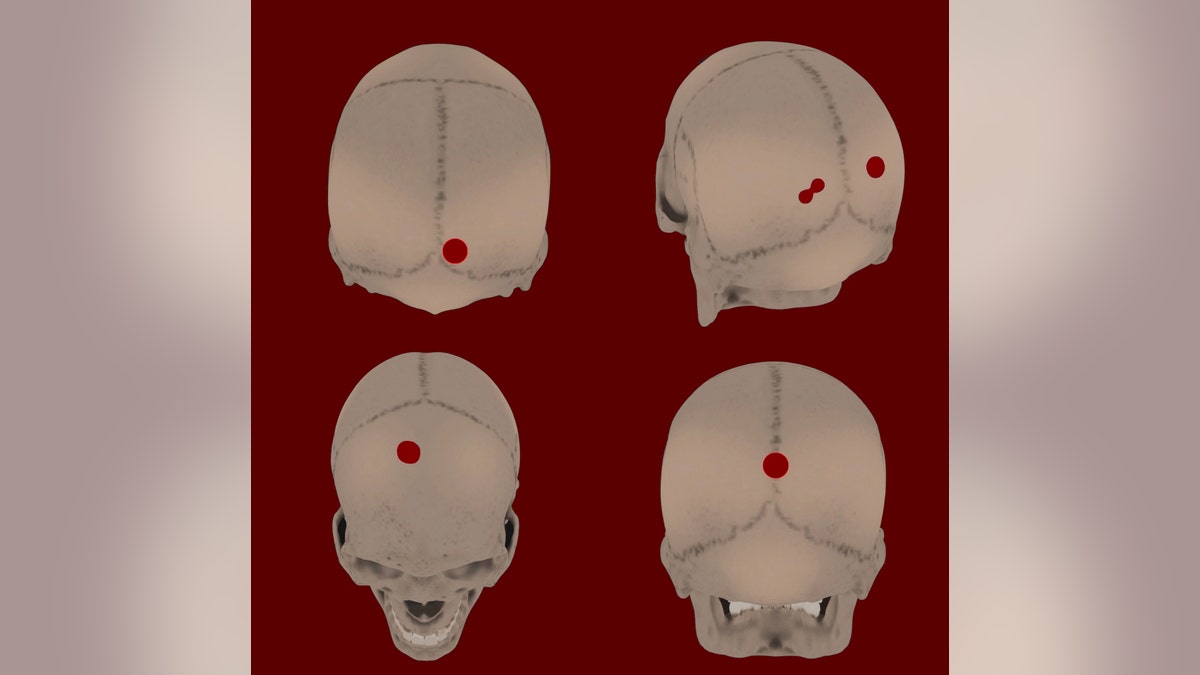Fox News Flash top headlines for August 27
Fox News Flash top headlines for August 27 are here. Check out what's clicking on Foxnews.com
Experts have shed new light on how the Inca civilization used “trophy heads” to maintain control over conquered peoples.
At its height in the 16th century, the Inca Empire spanned modern-day Peru, as well as parts of Bolivia, Ecuador and Chile.
“The Inca expansion to the southern Andes catalyzed important political and symbolic changes in local communities,” explained Francisco Garrido and Catalina Morales of Chile’s National Museum of Natural History, in a study published in the journal Latin American Antiquity. The Inca, for example, changed mining production, logistical and administrative infrastructure in the Copiapo Valley in northern Chile.
MYSTERIOUS NAZCA LINES REVEAL THEIR SECRETS
Chillingly, a new form of “ideological violence” also emerged under Inca rule, according to Garrido and Morales. “One new form was the display and discarding of human heads, a burial pattern unprecedented in the region,” they explained.

Holes had been made in the skulls, indicating that they may have been tied together with rope and put on display. (F. Garrido and C. Morales)
The researchers noted the discovery of “modified severed heads from young individuals” at the Chilean village of Iglesia Colorada as evidence of the grisly practice. The heads had been buried without grave items next to a local cemetery.
“Their use represented an effort to ideologically rule over newly incorporated subjects by demonstrating power and ensuring their compliance,” Garrido and Morales said.
REMAINS OF 140 CHILDREN FOUND AT SITE OF WHAT MAY BE HISTORY'S LARGEST MASS SACRIFICE: REPORT
Citing the study, Nature reports that four female skulls were found, three of which were from young women and the other was from a child. Holes had been punched into the skulls, probably so that they could be strung together with rope. They were eventually thrown onto a trash pile, according to the report.
In some other cultures (although not the Inca culture), severed heads have also been shrunken for display as trophies in a grisly process that involves removing the hair and skin from the skull and boiling the head, according to Smithsonian.com.

The skulls provide a glimpse into Inca use of "trophy heads" as a display of power, say experts. (F. Garrido and C. Morales)
In a separate statement released by Chile’s National Museum of Natural History, Garrido explained that many museums have placed shrunken heads or “jibara heads” on display. “These heads reduced to almost a fifth of the original size, have been considered as native ‘trophies’ and attributed mainly to defeated warriors whose aim was to capture their essence and value,” he wrote.
15TH-CENTURY MASS CHILD SACRIFICE SITE IN PERU MAY BE LINKED TO 'EL NINO EVENT'
Modern museums, however, are less inclined to place these gruesome artifacts on display. “While contemporary museums have ceased to exhibit these human heads and remains in general, the stereotype of the ‘jíbara head’ as a reflection of preconceptions of primitivism of certain indigenous groups, is something that still persists in Western culture,” he added in the statement.

The excavation site. (F. Garrido and C. Morales)
Peru continues to reveal new aspects of its rich history. In a separate project, scientists have been shedding new light on the mysterious Nazca Lines etched in the desert of southern Peru, revealing what some of the drawings actually depict.
A UNESCO World Heritage Site located about 249 miles south of Lima, the Lines are regarded as one of archaeology’s great mysteries. The lines are scratched into the dark ground to reveal the lighter-colored earth underneath and are best viewed from the air. They depict a range of animals, plants, imaginary beings and geometric figures.
Last year, archaeologists in Peru found what may be the largest mass child sacrifice site in history.
CLICK HERE TO GET THE FOX NEWS APP
Fox News’ Bradford Betz contributed to this article. Follow James Rogers on Twitter @jamesjrogers





















